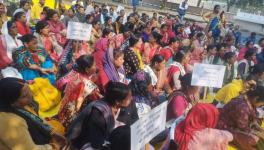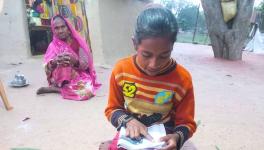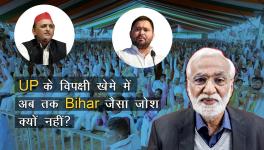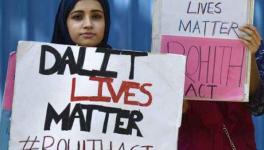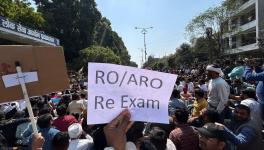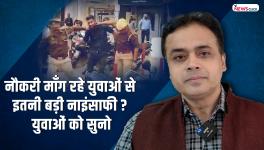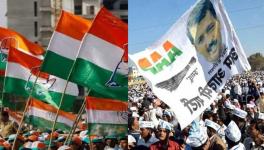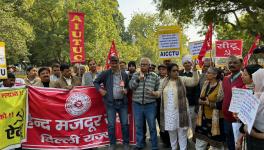In Gujarat, Rural Women Perform Turmeric Ritual to Remember Hathras Victim
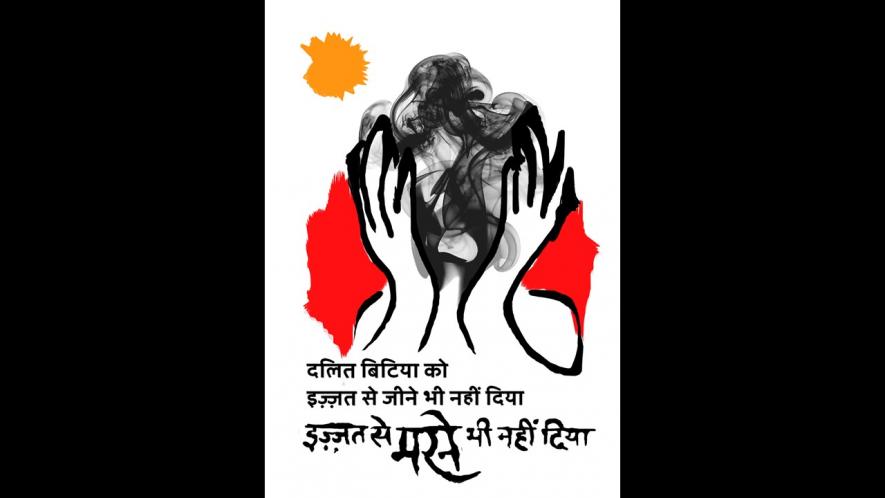
One would imagine that the horror of the gang-rape of the 19-year-old girl in September 2020 and the brutality of Uttar Pradesh police, who burnt the victim’s body against the wishes of her family, was news that would leave the whole nation shaken. Dalit rights activist Martin Macwan in Gujarat, however, discovered that many rural women had still not heard of the tragic sequence of events in Uttar Pradesh. He thus began a campaign to remember the injustice and help people stand in solidarity with the Dalit family of the victim.
“The girl’s mother said that she had died unmarried, and she wanted to offer her a proper cremation, washing the body ritually and applying turmeric on the forehead, as is the custom. She was unable to do that, and that was her big regret. The police burnt the body using petrol in the dead of night and the family was kept away from the site of the cremation,” Macwan said, adding, “To offer solidarity with the family, we got a small poster made, on which we invited people to dab a bit of turmeric on the forehead of the girl, as a mark of respect to her and a show of support to her family.”
Macwan explained that this was done in silence and afterwards, there were no speeches or ceremonies. People brought a little turmeric from their houses and applied it on the forehead of the girl in the poster.
“As they came out to perform this little gesture, I could see tears streaming down the women’s eyes,” Macwan said, recounting the experiences of Dalit groups in independent India over 70 years after the Constitution granted political equality to all citizens. He said that the anger and agitation that followed the gang-rape and death of a 23-year-old student in Delhi in 2012, was missing after Hathras. The girl in Hathras was from the Dalit community, and even among the Dalits, the most backward Valmiki community that traditionally worked in manual scavenging.
The activist recalled that in the 1970s, as a young man, he had for the first time witnessed manual scavenging – a woman was carrying excreta in a basket on her head in the rains; as she walked under the open sky in the rain, the liquid from the basket spilled over her face and upper body and she continued to work. “I’ve never been able to forget that sight,” he said, further adding that although manual scavenging was banned by law in 1993, the practice continues.
The Muslim-Dalit Connection:
On October 28, 2020, Macwan was speaking over Zoom to a group of people from across the country attending the third day of the week-long ‘Understanding Islam’ workshop. The theme of his lecture was the convergence between Dalit and Muslim groups in India, and he drew on history to explain how the relationship is deep and long, although little has been explored by historians.
In 1849, Jyotiba Phule and Savitribai were thrown out of the house after the former’s father came under pressure from orthodox Brahmins who opposed the couple’s efforts to educate girls from the lower castes in Maharashtra. When they needed a place to stay, Usman Sheikh took them in. In time, Fatima, Usman’s sister, would join Savitribai as the first teacher to assist in her education efforts.
In the 1930s, while Gandhi was organising the Salt Satyagraha, Ambedkar was organising a protest in Nashik to seek entry of lower caste groups into temples – the protest lasted about five years, and in this time, the Muslim farmers allowed the protesters to camp in their fields.
As the cooperation between the groups is historical, the sufferings inflicted on the two groups is also similar. In a recent video published by The Wire, the Dalits who converted to Buddhism in disgust after the gang-rape at Hathras, in a bid to carve an identity free of the Hindu tag, said they were only ever counted as part of the Hindu community when a crowd was needed to be quickly mobilised for a riot or to attack Muslims.
Caste and Politics:
Macwan spoke of how the dream that was represented by the adoption of the Constitution in 1950 has been overshadowed by the omnipresence of caste in India. French sociologist Louis Dumont explained that India was traditionally a society based on hierarchy – Homo Hierarchicus. Yet, the Constitution had made a stark break with that tradition, declaring all Indians equal. Ambedkar would say that political equality was only one aspect of equality – the task of independent India was to ensure economic and social equality as well. Macwan, in his lecture, showed how India had failed in this project. Ambedkar, in his prescience, had argued for a separate electorate for Dalits. This, however, was vigorously opposed by Gandhi, who considered that this would cause a rift within the Hindu community, over and above the rift that was growing between Hindus and Muslims.
Caste remains at the core of the governance system in India today, Macwan explained, citing the mobilisation of voters on the basis of caste in Bihar. Caste is so much part of the culture of the subcontinent that even Indian Muslims, Sikhs and Christians, whose scriptures profess equality, are divided on the basis of caste.
“The Dalit-Muslim bond is deep and enduring. To fight the stranglehold of caste, we need new cultural symbols – a new language that is respectful of women. In Indian languages, almost every term of abuse refers to some body part of the woman,” Macwan pointed out. “We need toys and books for children that depict greater equality and diversity; we need paintings and music that will speak a new language of equality. About 10%of India’s population is Muslim; about 16% is Dalit, and about eight per cent is Adivasi. Together, these groups can force the nation to march to a different tune.”
As an aside, Macwan pointed out that the poster used to pay homage to the Dalit girl of Hathras was designed by Muslim designer Shiraz Husain.
(Rosamma Thomas is a freelance journalist based in Pune.)
Get the latest reports & analysis with people's perspective on Protests, movements & deep analytical videos, discussions of the current affairs in your Telegram app. Subscribe to NewsClick's Telegram channel & get Real-Time updates on stories, as they get published on our website.










